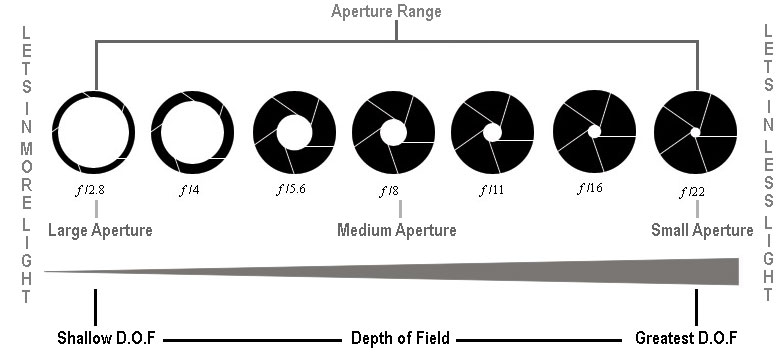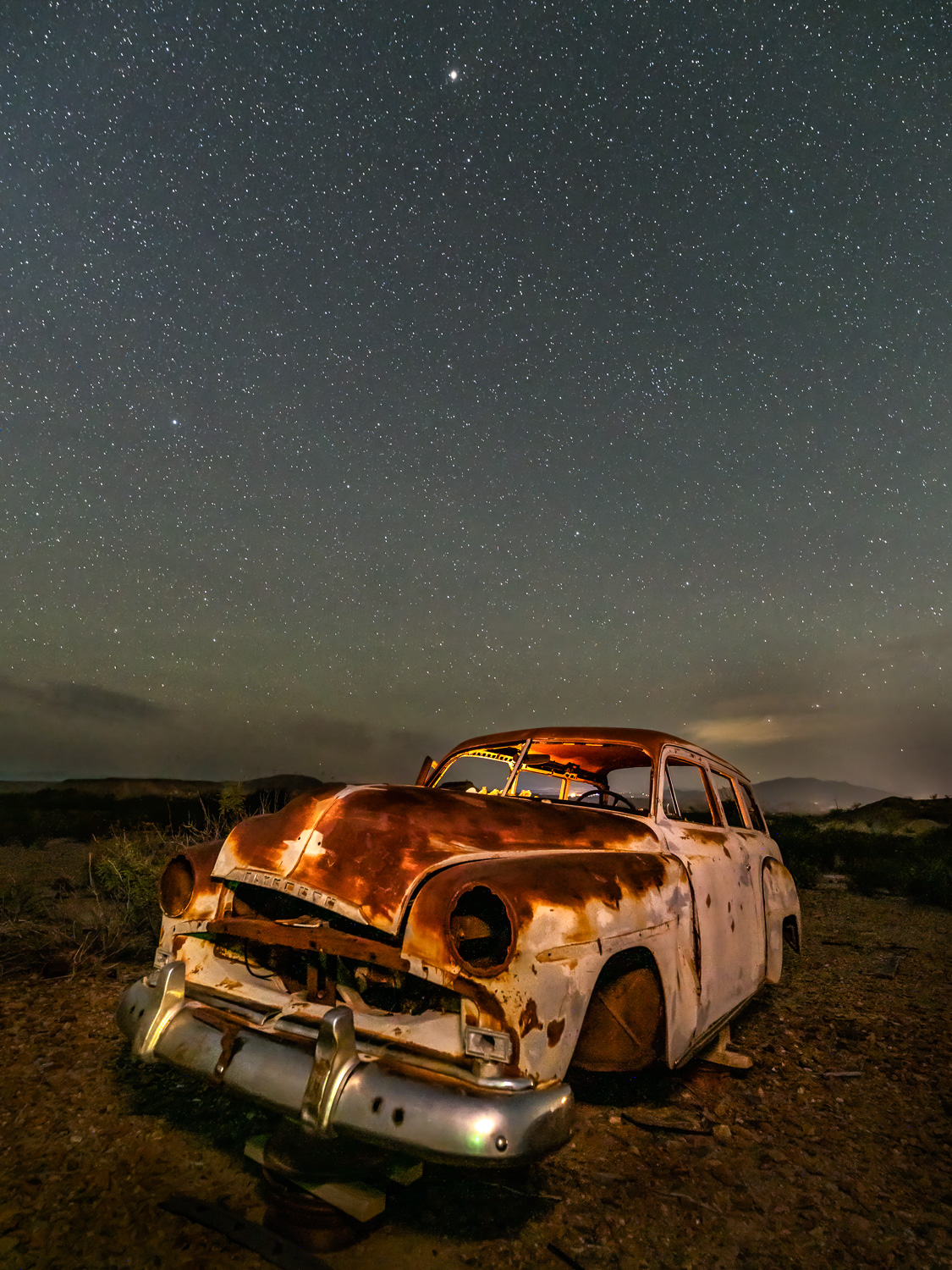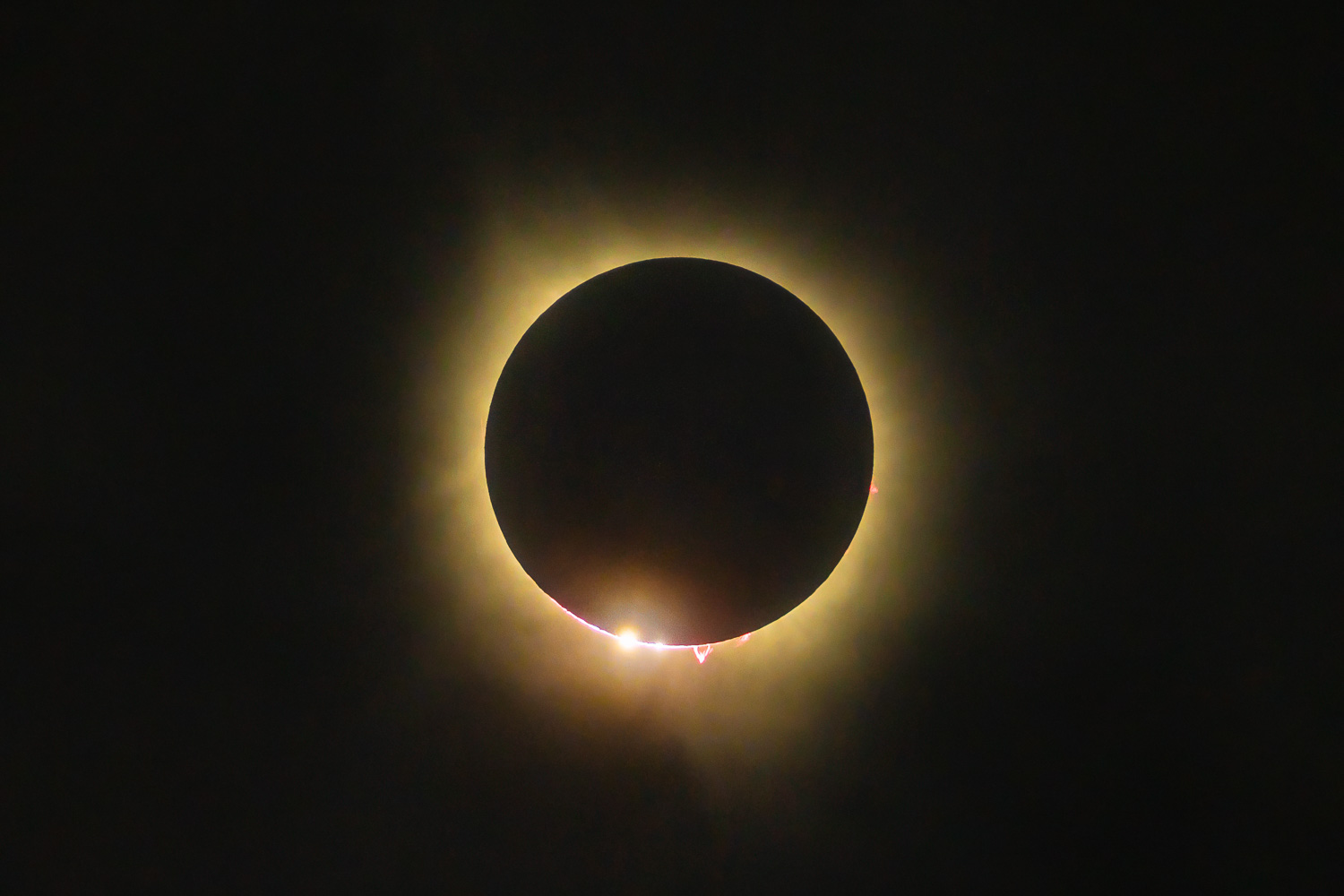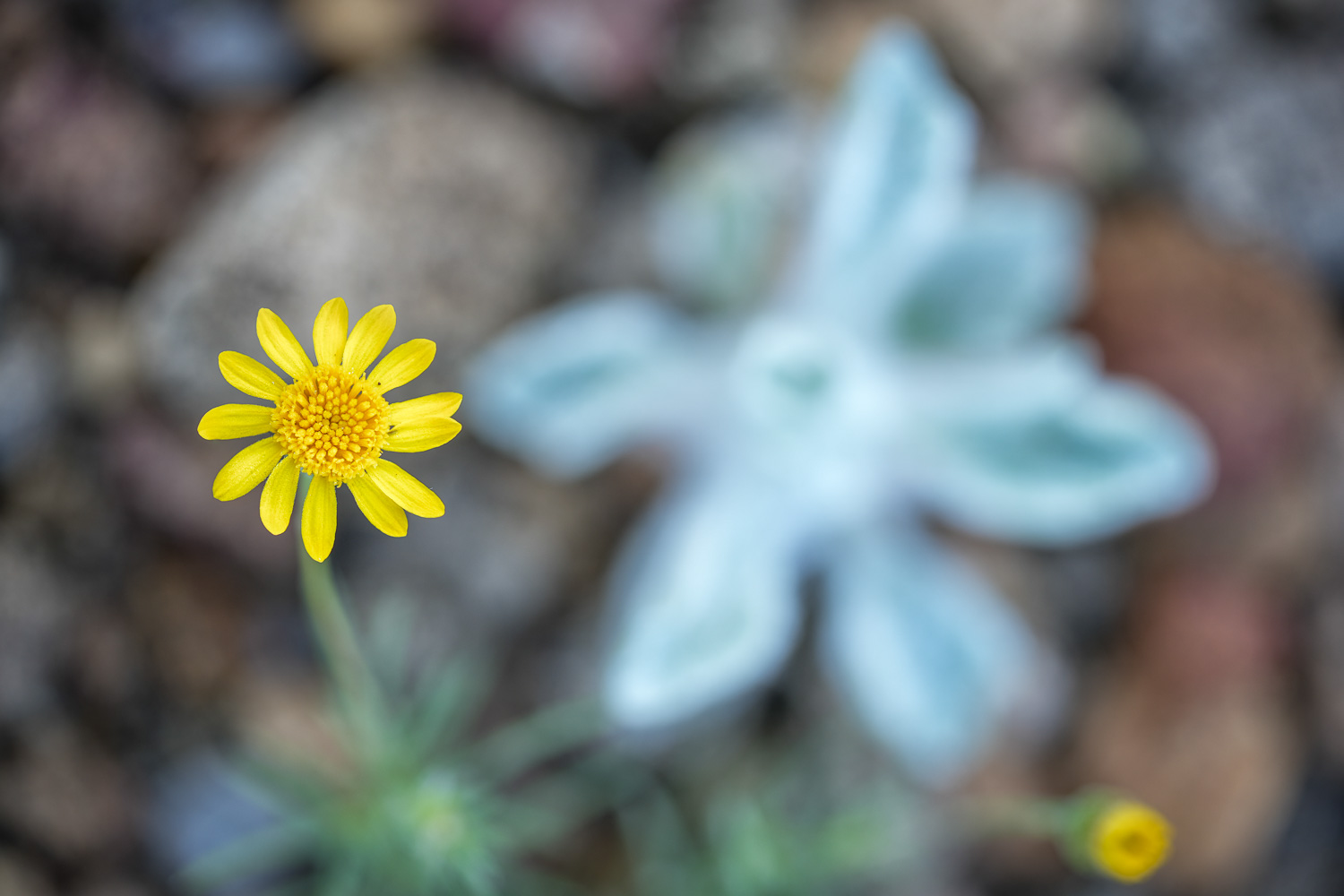A mechanical device that controls the amount of light admitted through an opening. In photography and digital photography, the aperture is the unit of measurement that defines the size of the opening in the lens that can be adjusted to control the amount of light reaching the film or digital sensor. The size of the aperture is measured in F-stop. The smaller the number the larger the opening. The larger the number the smaller the opening. The example below illustrates the size difference between an aperture of f/2.8 and f/16.
Aperture ranges vary depending on the lens. There are lenses that go down below f/1.0 and some that go up to f/32. Consult your manual to see what the range is for each lens you own. In addition, there are tradeoffs for different aperture settings. Larger apertures (e.g. f/2.8) allow more light which then allows you to use faster shutter speeds but, the tradeoff is the depth of field. Smaller apertures have much better depth of field but the tradeoff is much slower shutter speeds. In most cases, smaller apertures also reduce image quality.
See also: F-Stop



